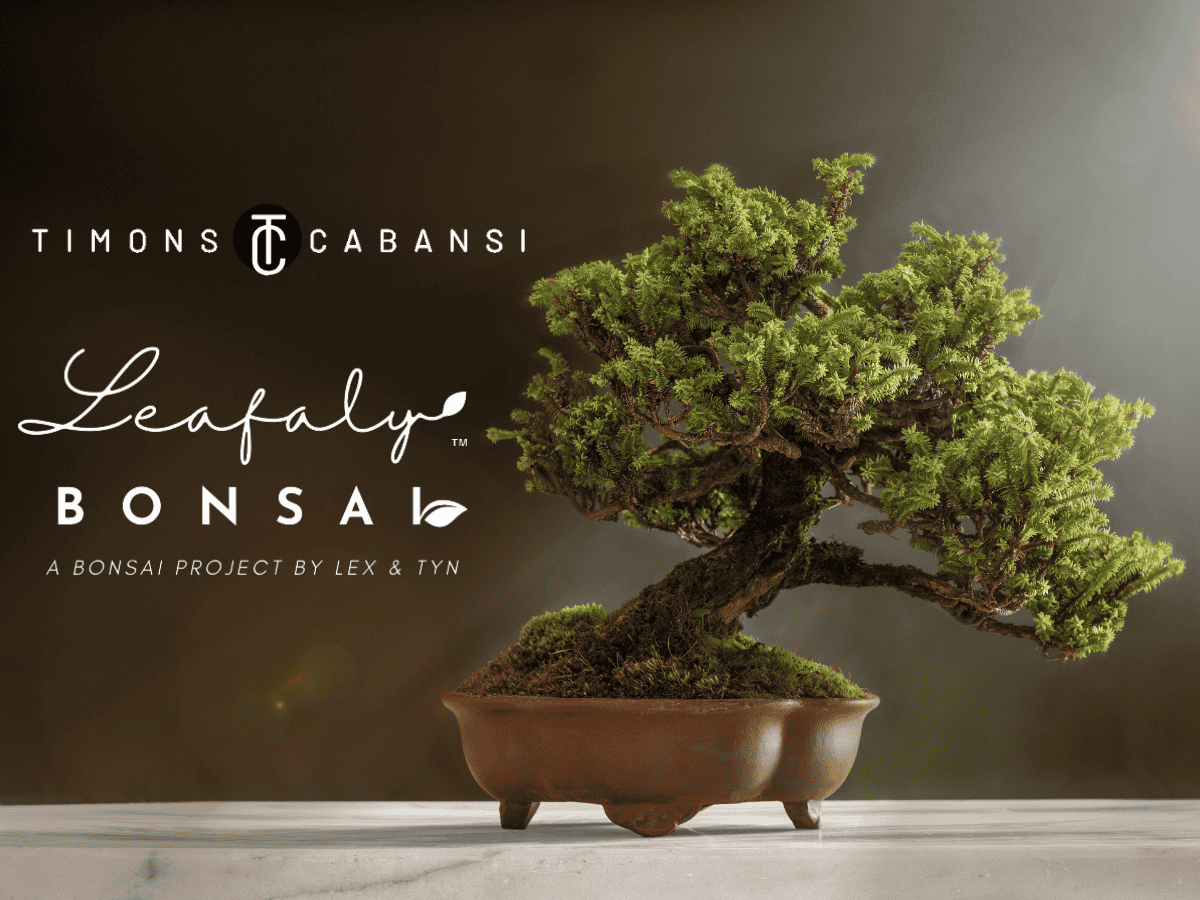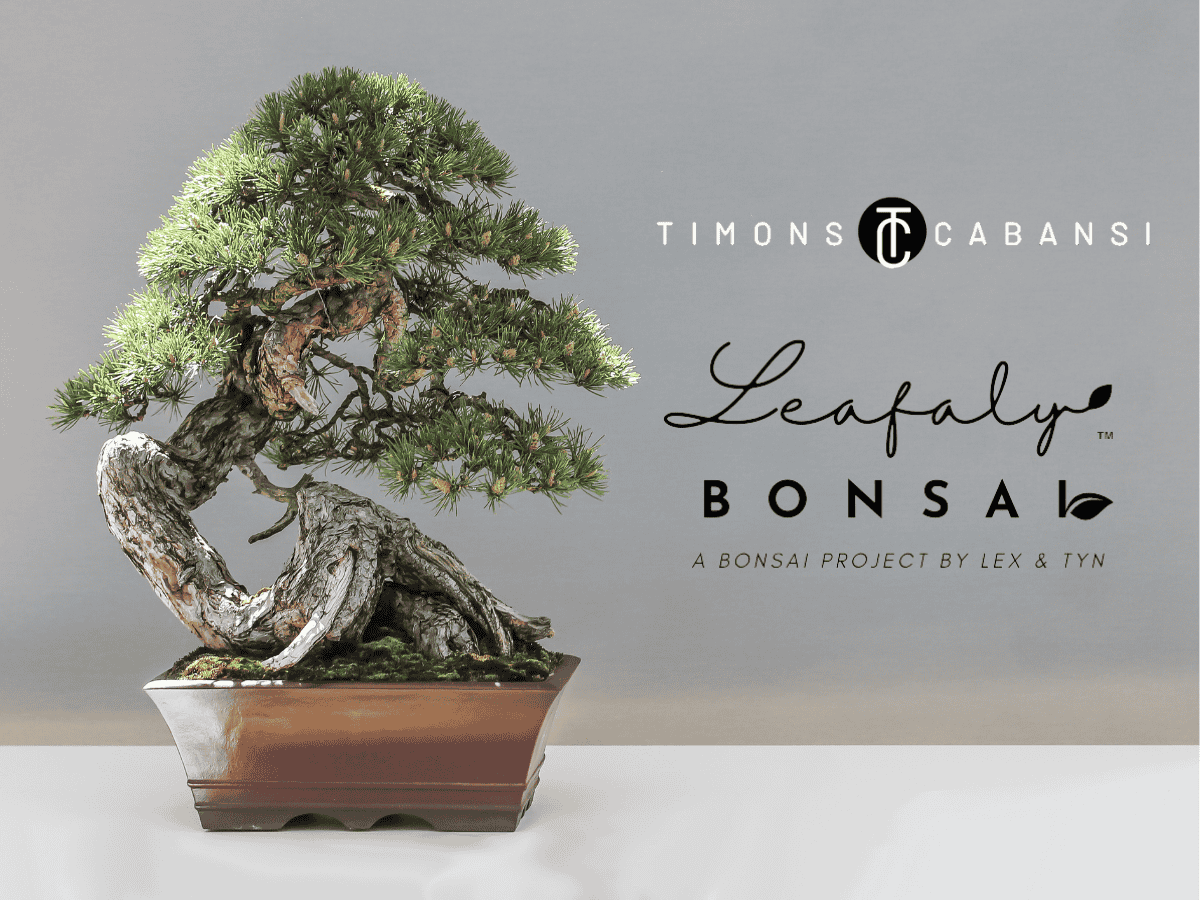Bonsai and Real Estate: The Parallels of Patience and Growth
By: Timons Cabansi

Imagine this: A tiny bonsai tree, meticulously pruned and shaped over decades, stands as a testament to patience, care, and long-term vision. Imagine a real estate portfolio carefully cultivated over years, growing in value and generating steady income.
At first glance, bonsai and real estate might seem worlds apart, but they share a common thread—the art of patience and growth.
In this article, we’ll explore the fascinating parallels between bonsai and real estate investing. From the importance of patience to the rewards of deliberate care, you’ll discover how the principles of bonsai can guide your real estate journey.
Whether you’re a seasoned investor or just starting out, these timeless lessons will help you cultivate a portfolio that stands the test of time.
What is Bonsai? A Quick Primer

Before we dive into the parallels, let’s break down what bonsai is all about. Bonsai is the ancient Japanese art of growing miniature trees in containers. It’s not just about making trees small—it’s about creating a living masterpiece through careful pruning, shaping, and nurturing.
The key to bonsai is patience. A single tree can take decades to mature, and every cut, every wire, and every watering is a deliberate act of care. The result? A stunning work of art that reflects the grower’s vision and dedication.
The Parallels Between Bonsai and Real Estate
At their core, both bonsai and real estate investing are about long-term growth, patience, and deliberate action. Here’s how they align:
1. Patience is Key
In bonsai, you can’t rush growth. A tree takes years, even decades, to reach its full potential. The same is true for real estate.
Real Estate Lesson:
- Don’t expect overnight success. Real estate investing is a long-term game.
- Focus on steady growth rather than quick profits.
- Be patient during market downturns—they’re often opportunities in disguise.
2. Careful Planning and Pruning
Bonsai artists carefully plan each cut to shape the tree’s growth. Similarly, successful real estate investors make deliberate decisions to maximize their portfolio’s potential.
Real Estate Lesson:
- Regularly review your portfolio and “prune” underperforming properties.
- Reinvest profits into high-potential opportunities.
- Stay disciplined and avoid impulsive decisions.
3. Nurturing Growth
A bonsai tree needs consistent care—water, sunlight, and nutrients—to thrive. Real estate investments also require ongoing attention to grow in value.
Real Estate Lesson:
- Maintain your properties to preserve their value and attract tenants.
- Stay informed about market trends and adjust your strategy as needed.
- Build relationships with tenants, contractors, and other stakeholders.
4. The Beauty of Compound Growth
Over time, a bonsai tree’s small, incremental growth adds up to something extraordinary. The same principle applies to real estate.
Real Estate Lesson:
- Reinvest rental income to acquire more properties.
- Take advantage of appreciation and equity growth over time.
- Let compound growth work in your favor by holding onto properties for the long term.
5. Adapting to Change
Bonsai trees are living organisms that respond to their environment. A skilled artist adapts their care to the tree’s needs. Real estate investors must also adapt to changing market conditions.
Real Estate Lesson:
- Stay flexible and open to new strategies.
- Diversify your portfolio to reduce risk.
- Be prepared to pivot during economic shifts or unexpected challenges.
How to Apply Bonsai Principles to Real Estate Investing
Now that we’ve explored the parallels, let’s dive into actionable strategies for applying bonsai principles to your real estate journey.
1. Start Small, Think Big
Just like a bonsai tree starts as a seedling, your real estate portfolio can start small. Focus on acquiring one or two properties and nurturing them to grow over time.
How to Do It:
- Choose properties with strong potential for appreciation and cash flow.
- Reinvest profits into new properties to expand your portfolio.
- Be patient—growth takes time.
2. Prune Your Portfolio Regularly
In bonsai, pruning is essential to shape the tree’s growth. In real estate, “pruning” means regularly reviewing your portfolio and making strategic adjustments.
How to Do It:
- Sell underperforming properties and reinvest in better opportunities.
- Restructure the property if there’s an opportunity within the vicinity for the highest and best use.
- Stay disciplined and avoid emotional attachments to properties.
3. Nurture Your Investments
Just as a bonsai tree needs consistent care, your real estate investments require ongoing attention to thrive.
How to Do It:
- Maintain your properties to preserve their value and attract tenants.
- Build strong relationships with tenants to reduce vacancies and turnover.
- Stay informed about market trends and adjust your strategy as needed.
4. Embrace the Long Game
Bonsai is a lifelong journey, and so is real estate investing. Focus on long-term growth rather than short-term gains.
How to Do It:
- Hold onto properties for at least 10-15 years to maximize appreciation.
- Reinvest rental income into new properties to grow your portfolio.
- Be patient during market downturns—they’re often opportunities in disguise.
5. Adapt to Changing Conditions
Bonsai artists adapt their care to the tree’s needs, and real estate investors must adapt to changing market conditions.
How to Do It:
- Diversify your portfolio across different property types and locations.
- Stay informed about economic trends and adjust your strategy as needed.
- Be prepared to pivot during unexpected challenges, such as market crashes or regulatory changes.
Takeaway
Bonsai and real estate investing are more alike than you might think. Both require patience, deliberate action, and a long-term vision to achieve success. By applying the principles of bonsai to your real estate journey, you can cultivate a portfolio that grows steadily and stands the test of time.
So, the next time you’re tending to your investments, remember the bonsai tree—small, deliberate actions today can lead to extraordinary results tomorrow.
What’s your take? Have you ever thought about the parallels between bonsai and real estate? Share your thoughts in the comments!
Frequently Asked Questions (FAQ’s)
1. What is bonsai?
Bonsai is the ancient Japanese art of growing miniature trees in containers through careful pruning, shaping, and nurturing.
2. How are bonsai and real estate similar?
Both require patience, deliberate action, and long-term vision to achieve growth and success.
3. How can I apply bonsai principles to real estate investing?
Start small, prune your portfolio regularly, nurture your investments, embrace the long game, and adapt to changing conditions.
4. What are the benefits of long-term real estate investing?
Benefits include steady cash flow, property appreciation, tax advantages, and financial security.
5. How do I stay patient in real estate investing?
Focus on your long-term goals, avoid impulsive decisions, and remember that growth takes time.
Disclaimer: This article is for informational purposes only and does not constitute financial, legal, or investment advice. Always consult with a professional before making any decisions.
Please Kindly Follow
TimonsCabansi.com – Where Life Meets Wisdom, One Article at a Time.
